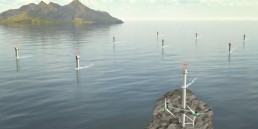Sustainable Neighborhood Auxiliary Power
download full report here

The year is 2018 and recent legislative measures and the finishing of the smart grid infrastructure have made it possible for renewable energy companies to compete fairly with nonrenewables in the marketplace. As a result a number of companies have blossomed quickly in the past two years. The most popular of these has been S.N.A.P. which stands for Sustainable Neighborhood Auxiliary Power. The great thing about S.N.A.P. is not just that they are a single point turnkey solution source, but that they allow users to pay for the clean energy over time rather than in one large up front lump sum.
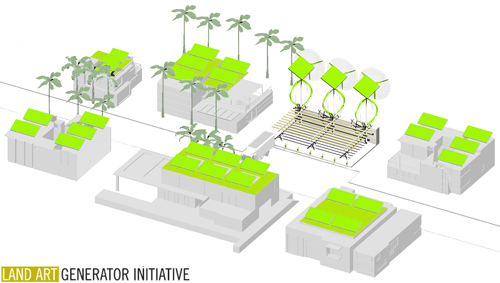
Every neighborhood has enough existing space to accommodate a S.N.A.P. installation. The 30 home install takes up the same area as a single family house lot. And every developer and planner is now making allowance for the S.N.A.P. lots into their layouts. The S.N.A.P. lots function to provide renewable energy to thirty houses and serve as charging stations for 9 electric vehicles at a time. With an integrated flywheel and compressed air storage area at the back of the installation, the power is available both day and night without the use of toxic batteries. The S.N.A.P. lots function also as open air community areas for people to gather and/or as community garden areas.
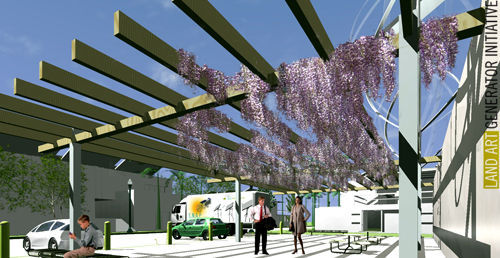
The most amazing thing about S.N.A.P. is that it arrives in one or two zero-emissions trucks and is installed in one or two days. S.N.A.P. can either come out beforehand to place the foundations or the developer can have them ready per S.N.A.P.’s specifications.
And the owners of the S.N.A.P. installation pay nothing up front. The greatest thing is that S.N.A.P. functions as a sort of energy company. The cost of the equipment and installation is amortized over a 30 year period with the end user seeing a bill each month that is roughly equivalent to the bill that they used to receive from their traditional fossil fuel burning energy company.

The sculptural form of the S.N.A.P. lot installation is a consequence of its 3 source combinatory system. The position of the two armature devices (solar CPV and horizontal wind turbine) are rotated around the central column to maximize their efficiencies based on local climate data. People love to sit and watch the system in action, especially the way the heliostatic CPV panels move to follow the position of the sun. You can almost keep time with them.
Existing communities around the world are getting together in cooperatives to purchase vacant lots in their neighborhoods. With each household only going in for 1/30th of the price, it usually runs around $2,000 each for the up-front cost of the lot. Once the lot is purchased, S.N.A.P. does the rest. The approximately $1 million dollar up front cost of the installation is paid back to S.N.A.P. over 30 years by each household through a $100 per month bill which includes a maintenance plan. The cooperative meets twice a year at the site to make decisions pertaining to usage and to add and remove households to and from the
distribution group.
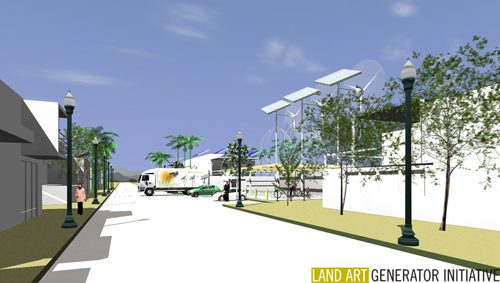
The S.N.A.P. systems rely on concentrated photovoltaic (CPV) heliostatic panels approximately 4 meters on each side. These panels follow the position of the sun to maximize energy production. The face of the panels is an array of Fresnel lenses that concentrate the energy of the sun on very small 2cm square CPV chips with an efficiency of 40%. A typical installation has three of these with a combined output capacity of 20KW. Adjacent to these and on the same mounting column are two wind energy turbines, one vertical axis (VAWT) and one horizontal axis (HAWT). The HAWT are rated at 12Kw each and the VAWT are rated at 8Kw each with a total wind capacity output (for a typical three-column installation) of 60Kw. That amounts to a combined total of 80Kw capacity for complete dual-energy three-column installation. With each household typically consuming 2.5Kw peak demand load, this comes to 32 houses. With the expected draw from vehicle charging, S.N.A.P. advertises this system at 30 houses. Of course with energy conservation and smart appliances this could conceivably double.
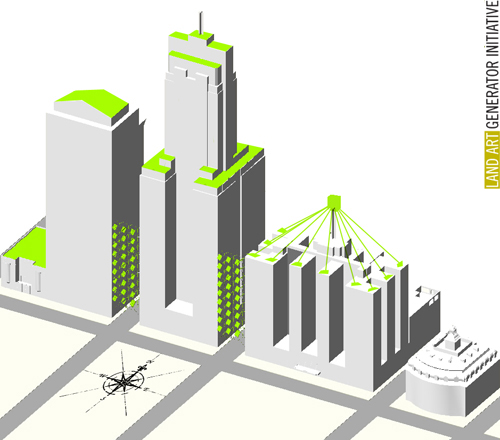
This past year office buildings have started to get into the action as well with the announcement of S.N.A.P. commercial. It is a scalable system that can be installed easily between mid- or high-rise buildings in any downtown. The most popular application takes advantage of the natural wind tunnel effects of large buildings. Other systems install arrays of heliostatic CPV panels on roof tops with “growing roof” planter bins underneath. One system even places solar power towers on the top of existing buildings.
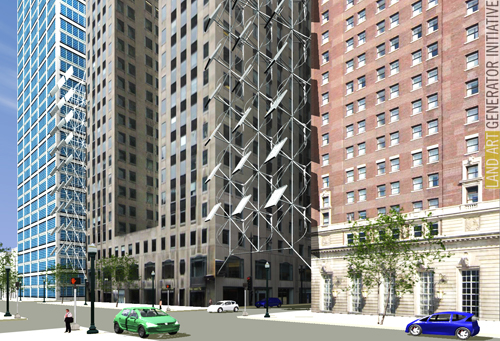
In a typical three-column wide installation between two buildings, each tier of equipment can run 3,000 m2 of office space (or 32,000 ft2) based on a per m2 load average of 25watts per m2. That’s the equivalent of a large downtown office building floor plate. Again, S.N.A.P. provides the up front cost and charges building owners a per month fee for service. Participating companies renting space in the building can choose to have their energy supplied directly from the S.N.A.P. renewable units or continue to pay their bills to the traditional energy company. Building owners are having a hard time keeping up with demand and it seems like it won’t be long until almost every building has a S.N.A.P. commercial installation running up its side.
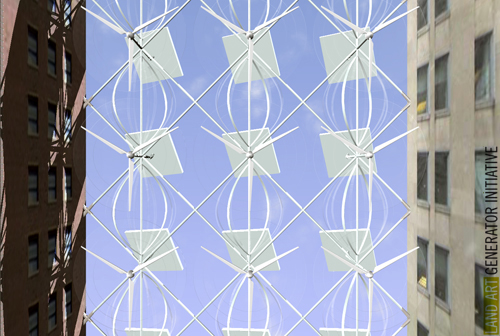
A between-building installation has a number of advantages over a large-scale turbine in the open landscape. The natural wind tunneling effect of the buildings creates a higher velocity of air for the turbines which are in the 10-20Kw capacity range each. These smaller turbines are more able to function under extreme wind speeds and can generate far more than their rated capacity at peak operation on very windy days. The installation is designed for each street width to ensure that no moving parts are within reach from windows.
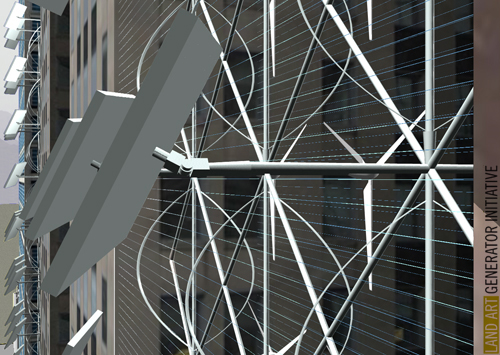
The location between buildings also allows the moving parts to be easily protected from flying animals by an array of very thin horizontal tension bands spaced at 15cm on center. S.N.A.P. has found that this spacing creates the exact visual barrier to birds and bats keeping them from flying near the system. And the thin ribbon profile of the bands allows the wind to flow through uninterrupted. The protection lines are pretty much invisible even from the ground directly below. They have been rendered in the image to the right for illustration purposes.

Cleaning and maintenance is no more difficult than it is for any building. With a permanent davit arm apparatus at the top of every S.N.A.P. system, a crew needs only to access the catwalk from the low adjacent roof and descend in a standard two person gondola to either side. For the occasion, the heliostatic panels are placed in a vertical position and all wind blades are locked. Gondola path is inside the tension cable boundary on the wind propeller side and outside of it on the CPV side.

